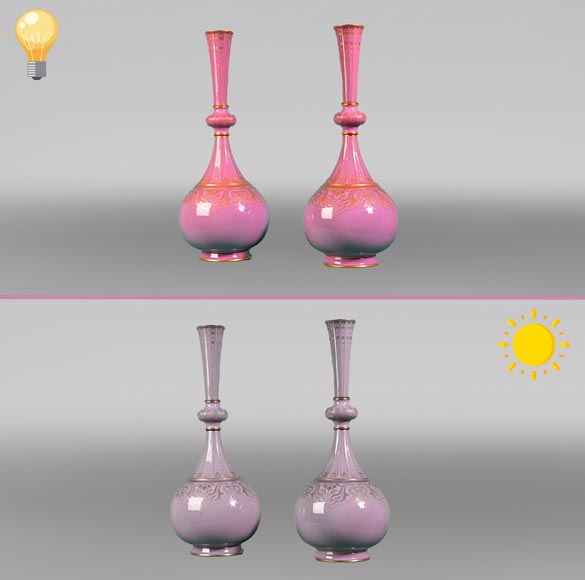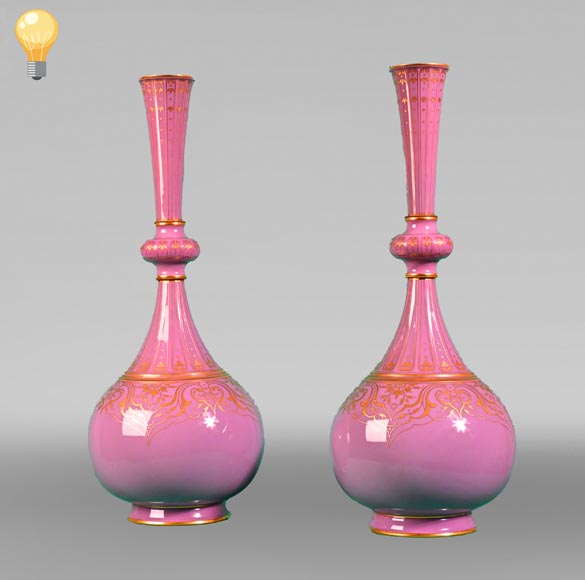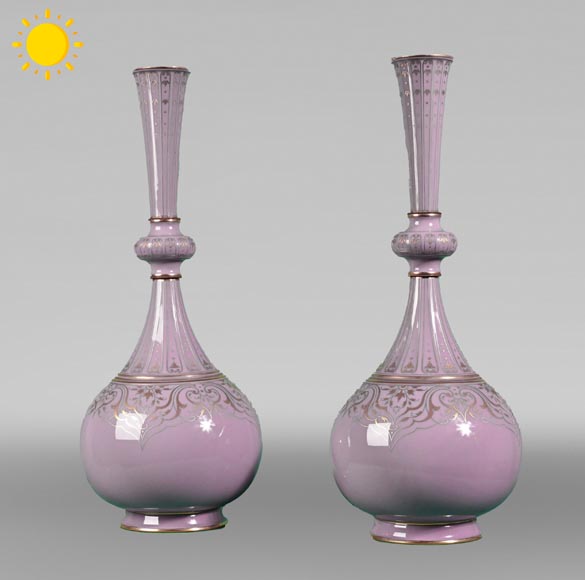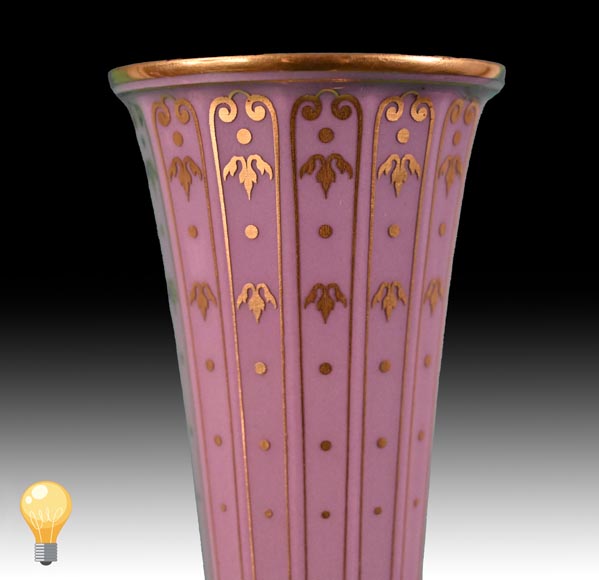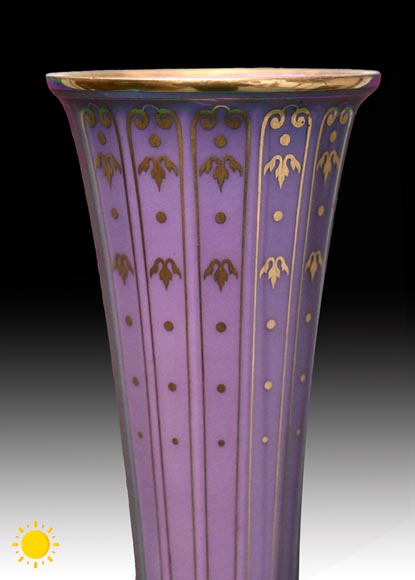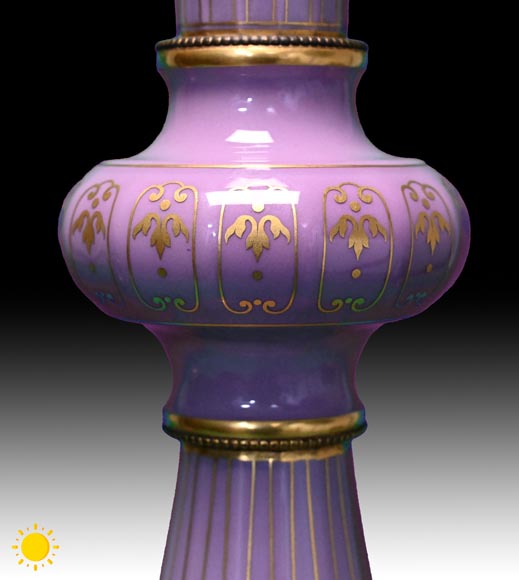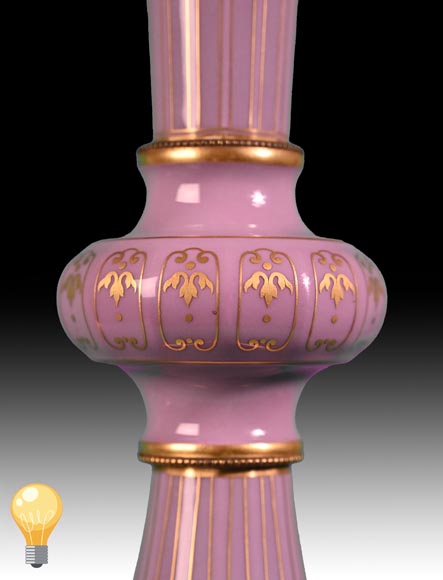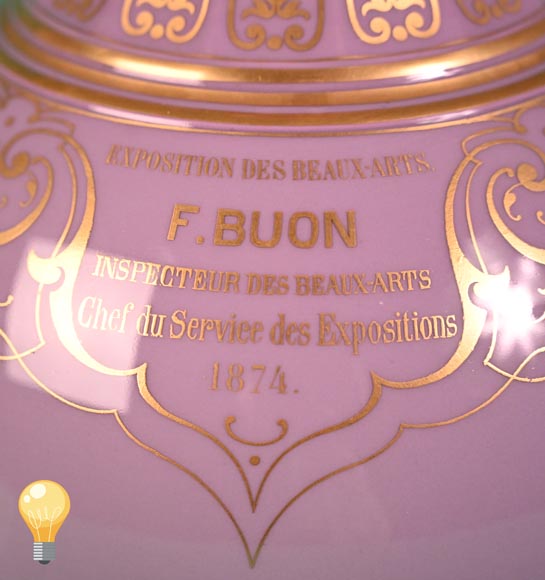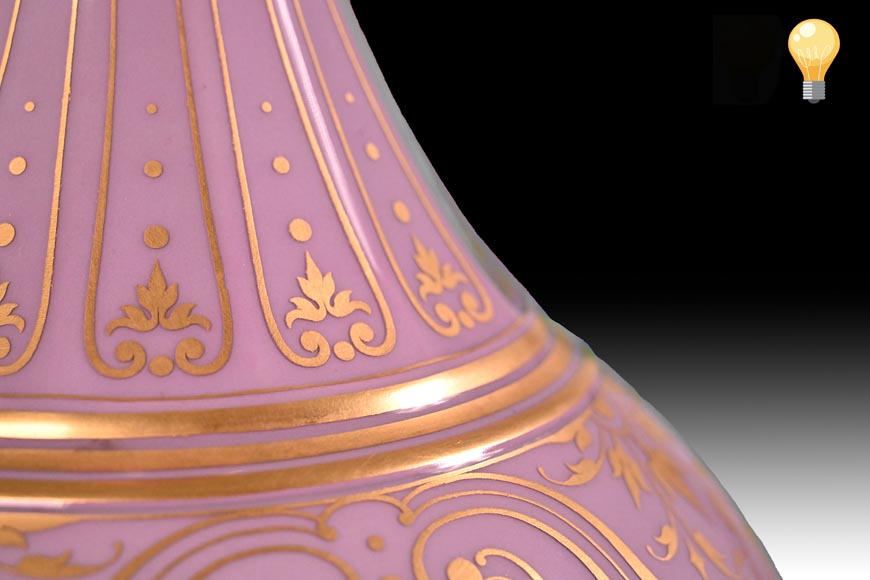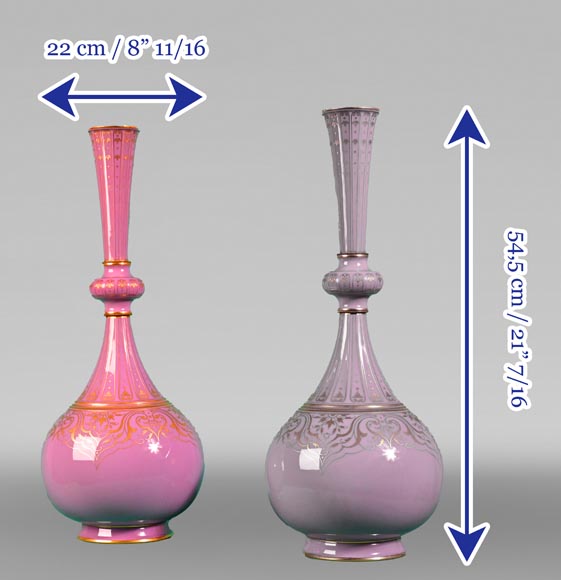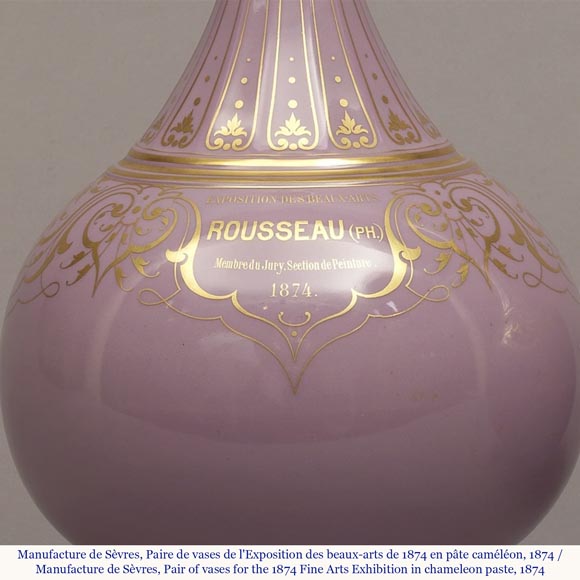Style Other / Ref.15033
SÈVRES Manufacture, Pair of Chameleon Vases of the Persian Bottle Model, 1874
Dimensions
Height 21'' ⅝ 55cm
diameter: 8'' ⅝ 22cm
Origin:
France, 1874
This pair of porcelain vases of the Persian bottle model was made at the Sèvres manufactory in 1874.
The “Persian bottle vase” model, created at the Sèvres manufactory in 1874 based on a Persian metal prototype, exists in several versions that vary in color and decoration. It is among the most characteristic of the manufactory’s production under the Third Republic.
One can perceive the direct influence of Albert-Ernest Carrier-Belleuse (1824-1887) in the design of these vases. A sculptor and student of David d’Angers, Carrier-Belleuse exhibited at the Salon starting in 1851. He worked in all genres with remarkable inventiveness. He provided several form models to English and Limoges ceramic factories and was the director of art works at Sèvres from 1875 until his death in 1887, completely renewing forms and decorations by introducing a new range of vases that achieved great success at the 1884 Exposition of the Union Centrale des Arts Décoratifs.
These two examples, forming a pair, are ovoid in shape with a long tapered neck with a quarter-round median ring. They feature an elaborate decor of Persian motifs in gold powder, with interlacing and arabesques on the body and decorated fillets on the neck. The lavender color is unique, changing depending on the light it is exposed to, from purple/grey in daylight to pale pink in artificial light. This is due to the use of the so-called “chameleon” paste invented in 1848 by the Sèvres manufactory chemist Alphonse Louis Salvetat for the 1862 Universal Exhibition. A mixture of vanadium oxide and cerium oxide allows this change of color according to its exposure to light.
Exceptionally, these vases are neither signed nor bear any mark of the manufactory. However, they have an inscription that leaves no doubt as to their origin or date: “EXPOSITION DES BEAUX-ARTS. / F. BUON / INSPECTOR OF FINE ARTS / Head of the Exhibitions Service / 1874”. Frédéric Buon was already an inspector of Fine Arts in 1870-1871 and later remained an honorary inspector. Therefore, these are commemorative vases, made especially for the 1874 Fine Arts Exhibition.
Similar vases to ours, although without an inscription, are referenced in a book published in 2012 by the Brian Haughton gallery, A Sense of Pleasure. A similar model, kept at the Musée des Arts et Métiers in Paris, is referenced in Second Empire and Third Republic, from Audacity to Jubilation by Brigitte Ducrot, published in 2008 in the Sèvres, a Ceramic History collection.
Another pair of vases, of the same model and with the same glaze, listed by the British Antique Dealers’ Association, bears an inscription similar to the one of interest to us: “EXPOSITION DES BEAUX-ARTS / ROUSSEAU (PH) / Member of the Jury, Painting Section / 1874”. The painter Philippe Rousseau was a painter of landscapes, still-lifes, and animals, who had been awarded several medals at the Salon. In 1874, he was an accomplished and recognized painter, and thus was appointed to the painting jury for the Fine Arts Exhibition.
Moreover, a different pair of vases, of a different model but bearing a similar inscription, was sold in 2023: these are Sèvres pedestal vases in blue kiln porcelain enhanced with gold, bearing the inscription “EXPOSITION DES BEAUX-ARTS. / VTE DELABORDE / OF THE INSTITUTE / Member of the Jury. Engraving Section. / 1873”. These vases are signed and dated. The Viscount Henri Delaborde (1811-1899) was first a history painter, then, when he had to give up painting, he became a renowned art historian. For a long time a curator in the Prints Department of the Imperial Library (now the National Library of France), he was naturally asked to be part of the engraving jury in 1873, an event commemorated by these vases and their inscription.
These numerous examples of commemorative vases suggest that on the occasion of at least two Fine Arts Exhibitions, in 1873 and 1874, the jury members and other organizers of the event were given a vase from the Sèvres manufactory, probably as a token of appreciation for their involvement in the event. It is even possible that, since the two vases dated 1874 are of the same model, a different model was selected each year for this purpose.



